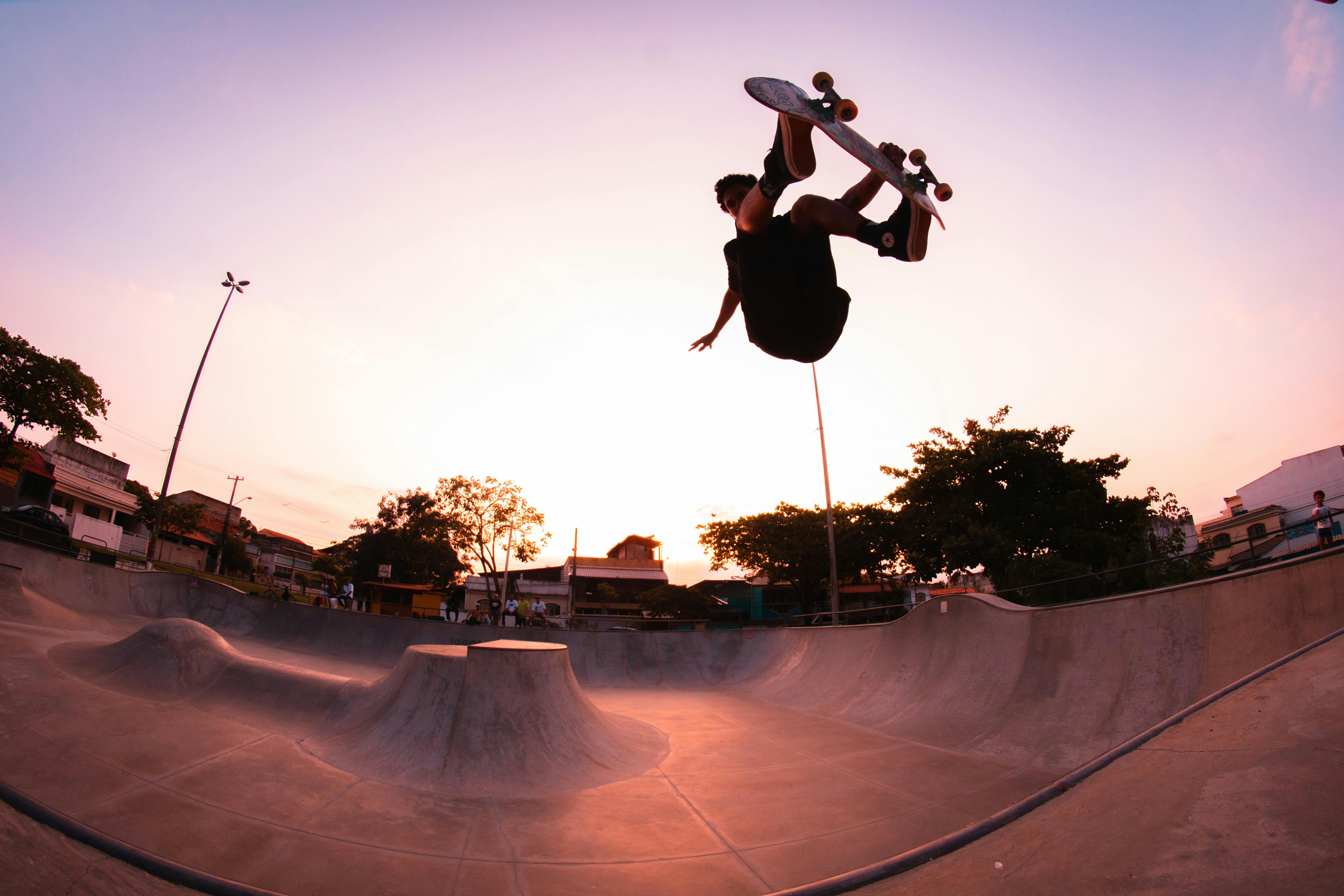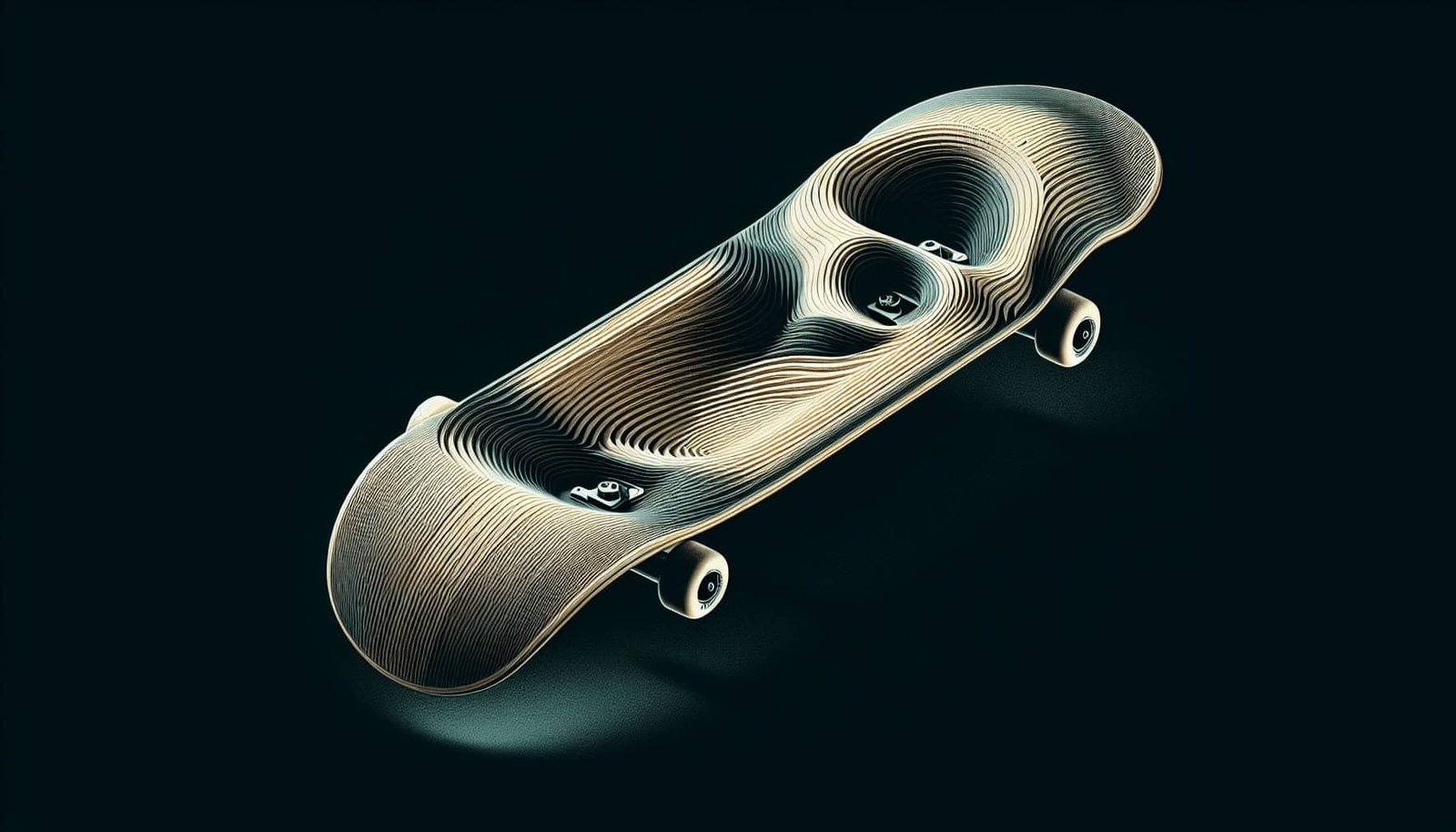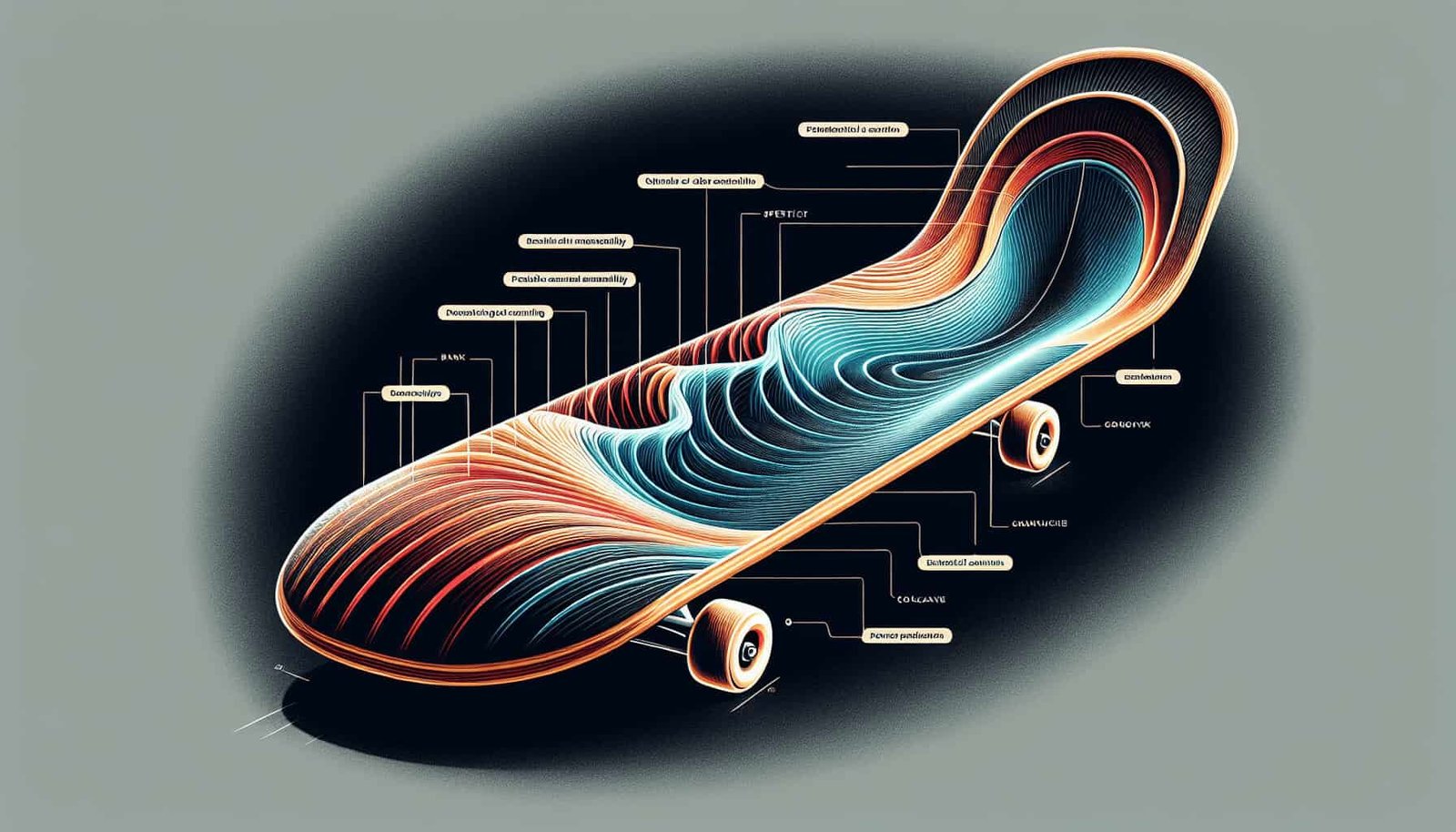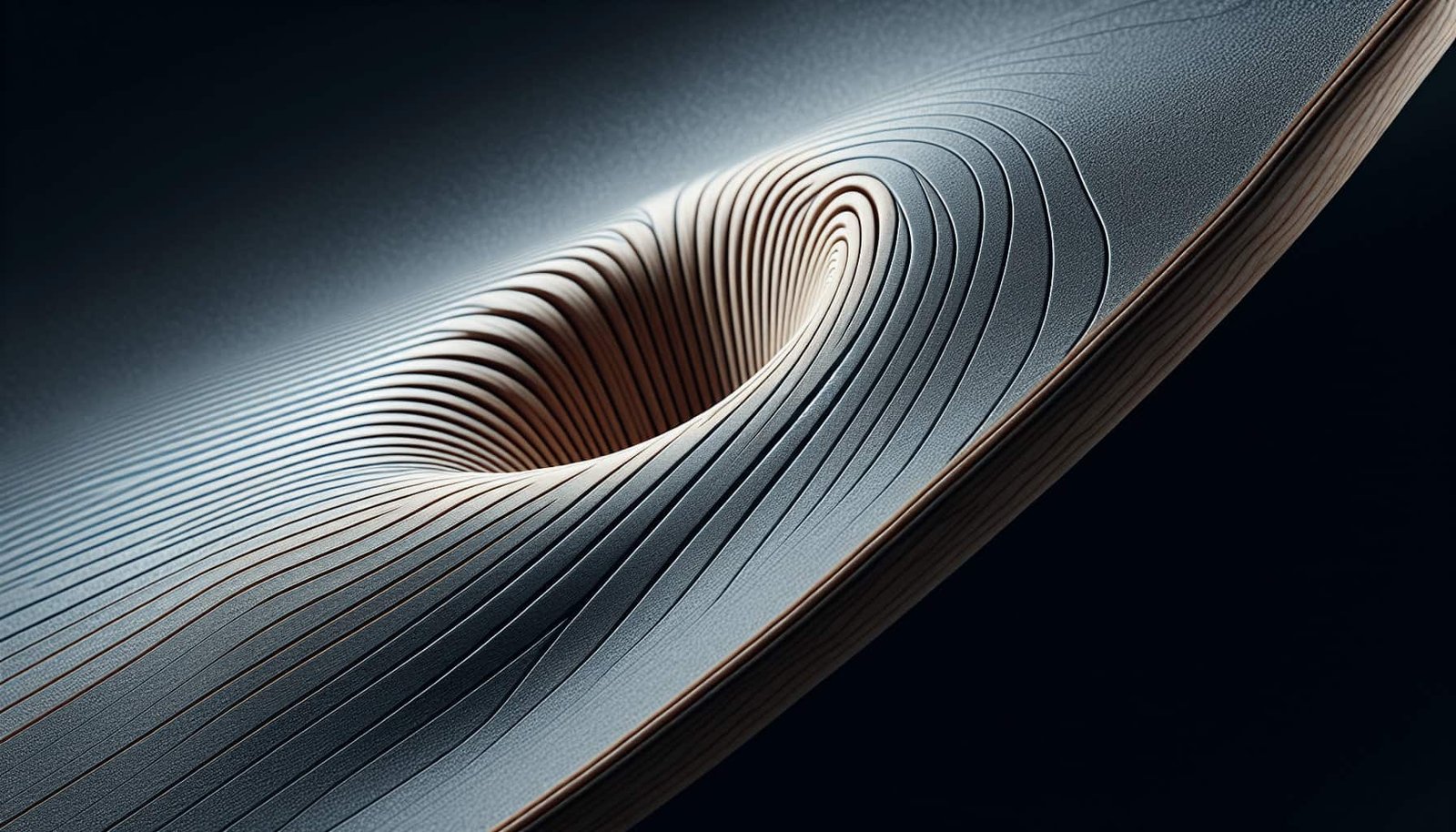Skateboarding has become a wildly popular sport and form of expression, captivating individuals of all ages and backgrounds. But have you ever stopped to think about the significance of skateboard deck concave and how it affects your performance? The shape of a skateboard deck plays a crucial role in your riding experience, influencing everything from stability and control to power and maneuverability. In this article, we will explore the fascinating world of skateboard deck concave and its impact on your overall performance, revealing the key factors that every skateboarder should know. So, get ready to dive into the world of concave and discover how it can enhance your skateboarding skills.

Understanding Skateboard Deck Concave
Skateboard deck concave refers to the curved shape of the board from side to side. This concave design plays a crucial role in a skateboard’s performance and is a defining characteristic of any deck. It is important to understand the different types of concave, their purposes, and their effects on performance.
Definition of Concave
Concave is the inward curvature along the width of the skateboard deck. When looking at a deck from the nose or tail, concave creates a U-shape. This curve is what gives the skateboard deck its unique shape and allows riders to perform various tricks and maneuvers.
Types of Concave
There are three main types of concave found in skateboard decks: radial, progressive, and flat.
Radial Concave: This type of concave has a smooth and even curve along the width of the deck. It provides a balanced feel and is often preferred by skaters looking for stability and control.
Progressive Concave: Characterized by a more aggressive and pronounced curve, progressive concave has a steeper angle closer to the edges of the deck. This concave type offers enhanced control and responsiveness.
Flat Concave: As the name suggests, flat concave has no curve and gives the deck a completely flat shape. It provides a neutral feel and is popular among skaters who prefer a more predictable board behavior.
Purpose of Concave
The primary purpose of concave in a skateboard deck is to enhance the rider’s performance in various aspects of skateboarding. Concave affects stability and control, pop and ollie power, and board feel and responsiveness.
Effect of Concave on Performance
The concave of a skateboard deck has a significant impact on performance. Let’s delve into the specific effects it has on various aspects of skateboarding.
Stability and Control
Concave plays a crucial role in providing stability and control while riding a skateboard. The curved shape creates a pocket that allows your feet to comfortably lock onto the board, reducing the chances of slipping off during tricks and maneuvers. This enhanced balance helps skaters maintain control and perform tricks more confidently.
Pop and Ollie Power
The concave shape of the deck, especially in the tail area, significantly impacts a skateboard’s pop and ollie power. The curvature allows riders to generate more leverage and snap when popping the board, resulting in higher ollies and improved maneuverability. The concave shape acts as a spring, storing and releasing energy to give skaters the extra boost they need for tricks.
Board Feel and Responsiveness
Concave also influences the board feel and responsiveness of a skateboard. The curvature creates a natural arch that allows riders to feel the board under their feet and make quick adjustments. This tactile feedback enhances responsiveness, allowing skaters to have a better connection with their board and execute tricks with precision and control.

Different Deck Shapes and their Concave
Various deck shapes offer different concave profiles, catering to the preferences and style of skaters. Let’s explore some common deck shapes and the concave associated with them.
Standard Popsicle Shape
The standard popsicle shape is the most common skateboard deck shape, featuring a symmetrical design with a rounded nose and tail. The concave on these decks is usually radial, providing a balanced feel and versatile performance. This shape is favored by street skaters and those who enjoy technical tricks and flips.
Old School Shape
Old school shapes refer to the wider, more square-tailed decks that were popular in the early days of skateboarding. These decks often feature a mellow or flat concave, offering a more stable and comfortable ride. Old school shapes are preferred by skaters who enjoy cruising, slashing, and carving on transitions.
Cruiser Shape
Cruiser shapes are designed specifically for smooth and comfortable cruising. They have a wider and more rounded shape, often with a mellow or flat concave. These decks prioritize a stable and relaxed ride, making them ideal for transportation and relaxed cruising.
Choosing the Right Concave
Choosing the right concave for your skateboard deck is essential to optimize your skating experience. Several factors should be considered when selecting the concave that best suits you.
Skater’s Preference
Ultimately, your personal preferences and style of skateboarding will play a significant role in choosing the right concave. It is essential to consider what feels comfortable and natural to you when standing on a board. Experimenting with different concave types will allow you to discover what gives you the best performance and confidence.
Terrain and Style of Skating
The type of terrain you skate and your preferred style of skating should also influence your concave choice. If you predominantly skate on ramps or transitions, a shallower concave with a flatter or mellow shape may provide better stability and control. On the other hand, if you enjoy technical street tricks, a more pronounced and aggressive concave might suit your needs.
Deck Width and Foot Size
The width of your skateboard deck and the size of your feet can also impact your concave selection. Generally, wider decks accommodate larger feet and provide more area for a comfortable stance. If you have larger feet, choosing a deck with a deeper concave can help ensure a secure and stable ride.

Adjusting Concave for Customization
Skaters who wish to further customize their concave can make adjustments using risers and wheelbase modifications.
Risers and Wheelbase
Risers are plastic or rubber pads placed between the skateboard deck and the trucks. They can be used to alter the height of the trucks, which indirectly affects the concave. By adjusting the height, you can manipulate the feel of the board and potentially change the concave’s effectiveness.
Modifying the wheelbase, the distance between the trucks, can also impact concave. A shorter wheelbase reduces the concave’s leverage, resulting in a flatter feel, while a longer wheelbase can exaggerate the concave’s effect.
Adding Hardware and Risers
Adding additional hardware, such as washers or riser pads, can also affect the concave to a certain extent. Using riser pads, for example, can slightly flatten the concave due to the increased distance between the deck and trucks.
It’s important to note that these adjustments will have subtle effects on the concave and should be approached with care, as they may impact other aspects of the skateboard’s performance.
Pros and Cons of Deep Concave
Deep concave, often associated with progressive concave shapes, has both advantages and potential drawbacks.
Increased Board Control
One of the significant advantages of deep concave is the increased board control it offers. The sharper curve allows riders to feel locked into the concave pocket, providing a secure grip and allowing for precise foot placement. Skaters who prioritize control and responsiveness may find deep concave beneficial.
Potential for Foot Discomfort
On the downside, deep concave can sometimes cause discomfort, particularly in the arch of the foot. The heightened curve may create pressure points that can lead to foot fatigue and soreness over extended periods of skateboarding. It’s essential to consider your comfort level and determine whether the benefits of deep concave outweigh the potential discomfort.

Pros and Cons of Flat Concave
Flat concave, characterized by its absence of curve, offers its own set of pros and cons.
Neutral Feel
One significant advantage of flat concave is its neutral feel. It provides a consistent and predictable riding experience that some skaters prefer. Riders who prioritize a balanced and less pronounced concave may find flat concave more suitable for their style.
Limited Board Control
However, the lack of curvature in flat concave can result in limited board control compared to more aggressive concave types. Skaters seeking enhanced grip and pocketing may find flat concave less ideal. It may feel less secure during tricks and potentially impact overall performance.
Pros and Cons of W-Shaped Concave
W-shaped concave is a unique design that offers specific benefits and drawbacks.
Enhanced Foot Lock-In
The W-shaped concave features multiple curves that form pronounced pockets for your feet. These pockets enhance foot lock-in, providing exceptional grip and control. Skaters who perform technical tricks and require precise foot placement may find W-shaped concave highly advantageous.
Less Stability on Rails and Transitions
On the flip side, the W-shaped concave’s multiple curves can sometimes reduce stability when riding on rails or transitioning between different terrains. The uneven distribution of concave may compromise balance and control, making certain skateboarding styles less suitable with this concave type.

Experimental and Unique Concave Designs
In addition to the traditional concave shapes, skateboard manufacturers and designers continue to experiment with unique and unconventional concave designs. Some notable examples include:
Bubble Concave
Bubble concave features an exaggerated dome-like shape, creating multiple concave pockets beneath your feet. This design aims to improve overall board control and stability by offering increased grip and surface area. Skaters looking for an out-of-the-box concave experience may gravitate towards bubble concave decks.
Convex Concave
Convex concave is the opposite of traditional concave. Instead of an inward curve, it has a raised arch in the middle of the deck. This design promotes a surfboard-like feel, allowing for smooth turns and carves. Convex concave decks are popular among skaters who enjoy cruising and carving on open roads.
Spoon Concave
Spoon concave features a unique concave design that is deeper in the middle and tapers off towards the edges. This shape aims to provide a locked-in feeling similar to a spoon fitting with the skater’s feet. Spoon concave offers exceptional board control, making it ideal for advanced riders and those seeking a more niche concave experience.
Conclusion and Personal Preference
In conclusion, skateboard deck concave plays a significant role in a skater’s performance and overall experience. Understanding the different types of concave and their impact on stability, control, pop, and board feel allows skaters to make informed decisions when choosing a deck.
Personal preference is paramount when selecting concave, and experimenting with different shapes and types will help each skater find their ideal concave profile. Consider your skating style, preferred terrain, and deck width when choosing the concave that suits you best.
Ultimately, the significance of skateboard deck concave lies in its ability to enhance your skateboarding experience. So get out there, try different concave options, and discover the perfect curve that complements your style and unlocks your true skating potential!

